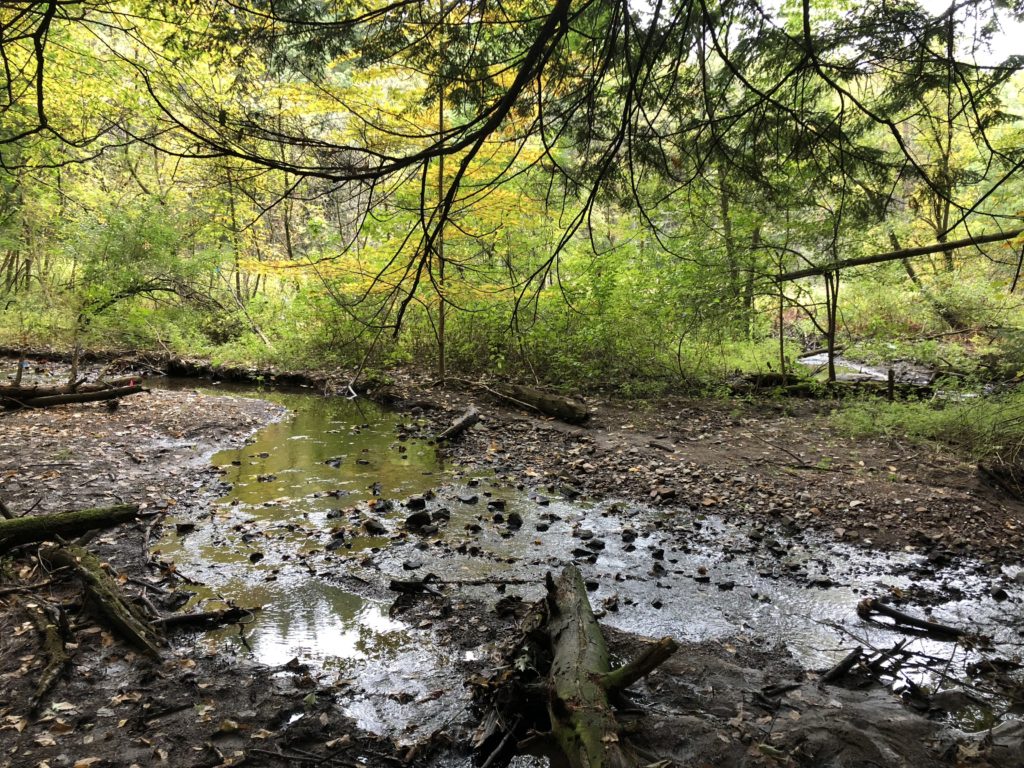Hello, and welcome to my phenology project blog! This post will be an introduction to the spot that I chose to carry out this study.

To get to this spot, you enter Centennial Woods through the Catamount Drive entrance, and follow the main trail (should be going slightly downhill, over a few footbridges, and past the brook). Once you reach the point where the trail forks into three sections, keep going straight, over the hill, and down towards the water. In about 20 yards, there is a steep bank, and you can see the horseshoe-shaped bend in the brook. Thats it!
https://www.google.com/maps/d/edit?hl=en&mid=12CY7iLL1pyAmjsCdQGVShl4lM4FWc0M3&ll=44.47714718465879%2C-73.18787914999996&z=18
(44.4777, -73.1859)
This is a magical little section of the woods. Here, softwoods, hardwoods, and herbaceous plants all intertwine. There is a steep slope to the bank of the brook, where it then flattens out into a little beach. The brook twists and curves its way through the landscape. Adding to this, the meadow provides a beautiful backdrop on the northern side. I love the variety of components present here, which is precisely why I chose to study it.

The herbaceous plants mainly consist of wood ferns and jewelweed. For the most part, these are on the northern part of the site where the brook is. Also located here are several common buckthorns. On the drier section, northern hemlock, eastern white pine, sugar maple, red maple, yellow birch, and red oak comprise most of the woody plants.
I look forward to developing a closer relationship with my gem of a spot!
All photos are my own.